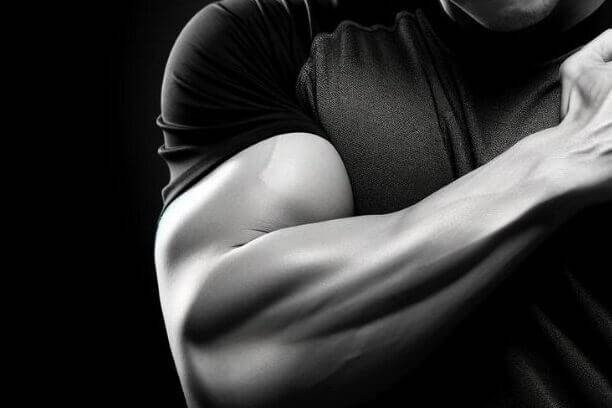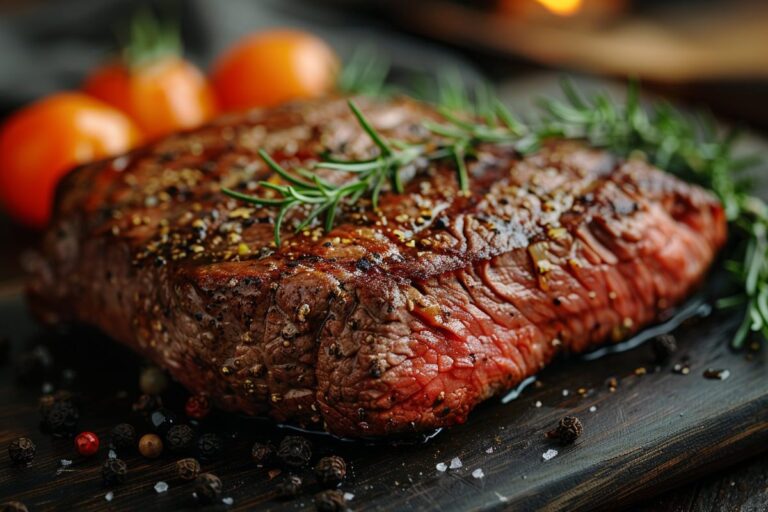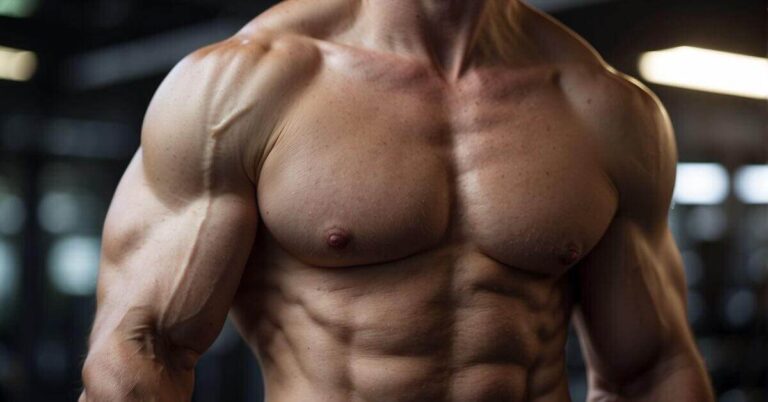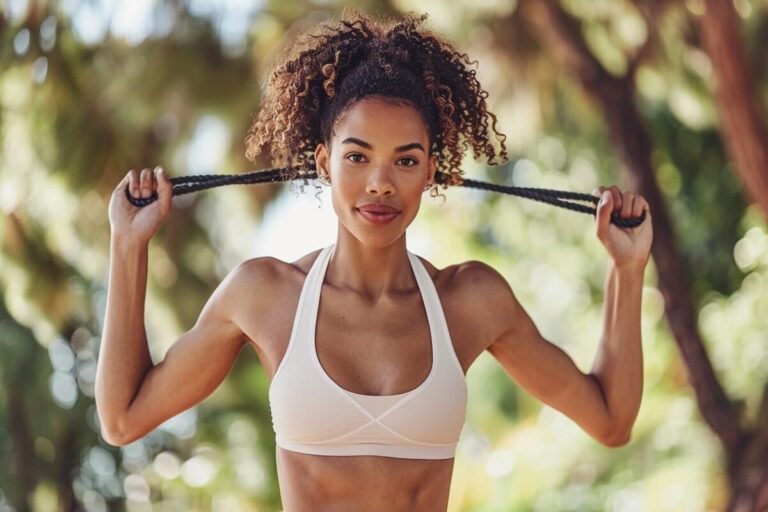There’s always been a debate about arm strength: biceps versus triceps, the muscles that let you curl versus those that let you push.
The biggest question is ‘Should Biceps or Triceps Be Stronger?’
Both biceps and triceps are essential for balanced arm development, but a closer look at the anatomy and mechanics of the arm might suggest a slight shift in focus.
In this article, we’ll explore how each muscle contributes to everyday movements and exercise routines.
We’ll investigate the roles of muscle contractions and how they help with basic daily tasks. Then we’ll be able to understand whether the less-celebrated triceps deserve a bit more recognition for their role in arm strength and function.
Let’s dive into the facts and find out if emphasizing triceps development is the key to maximizing your arm’s capabilities.
Key Things to Know:
- Balanced Strength: For optimal arm function, strive for a balance in strength between biceps and triceps.
- Triceps Mass: Triceps comprise about two-thirds of arm mass, playing a key role in pushing movements.
- Functional Fitness: A symmetrical development of arm muscles ensures better performance in daily tasks and sports.
- Injury Prevention: Maintaining muscle balance is crucial to avoid injuries and enhance overall arm aesthetics.
Understanding Arm Anatomy
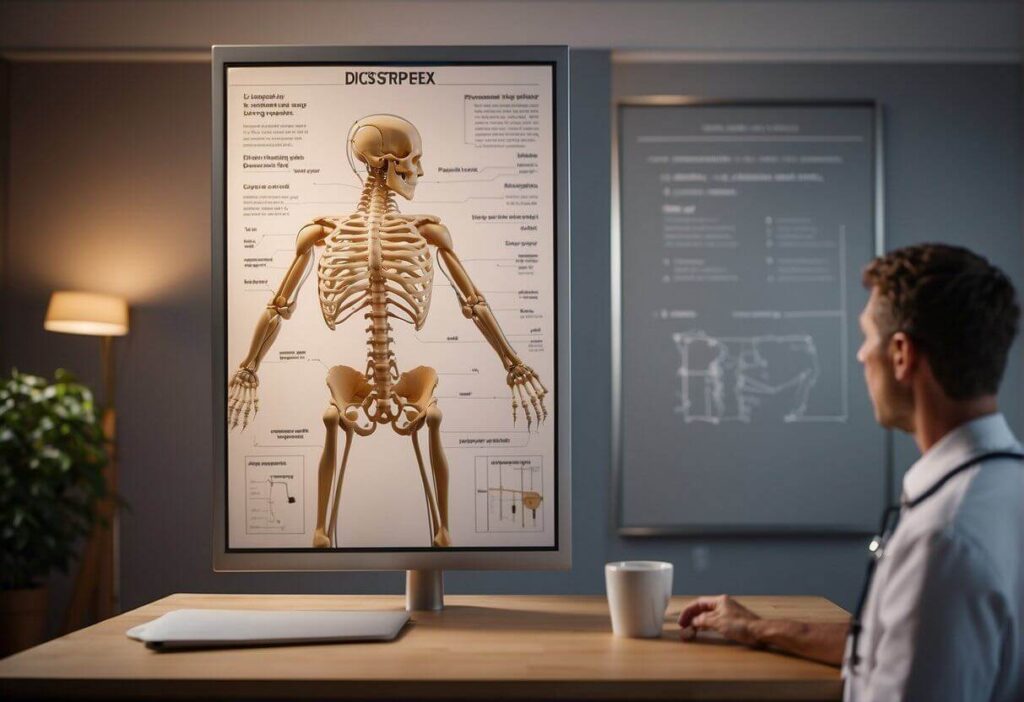
When you’re aiming to get those arms in shape, knowing a bit about the muscle anatomy of the upper arm is useful. Let’s look at the main muscles involved: the biceps, triceps, and a few supporting muscles that together, make up your arm’s powerhouse!
Biceps and Their Function
Your biceps, scientifically known as biceps brachii, sit right at the front of your upper arm. These impressive muscles are composed of two distinct heads, namely the long head and the short head.
They are used in pulling movements. Their main function is the flexion of your elbow joint, or more simply, bending your elbow – think of lifting a bag of groceries and this is your biceps working for you.
In addition, the biceps also contribute to the smooth movement of your shoulder joint, providing stabilisation assistance in various activities.
Triceps and Their Role
The triceps are located on the back of your upper arm. The triceps brachii has three parts or heads: the medial head, long head, and lateral head.
These three heads work together to straighten your elbow, or more simply, they create a pushing movement. They help to perform actions such as giving a high-five or pushing open a heavy door.
The triceps play a significant role in arm movements as they make up approximately two-thirds of your arm volume.
By providing strength and power, they contribute to various activities that require a strong extension of the elbow.
Supporting Muscle Groups
Tucked in between the biceps and triceps, there’s the brachialis muscle, a true force when it comes to powerful elbow flexion.
And then there’s the brachioradialis, which runs from your upper arm to the ulna (one of your forearm bones). These muscles are activated when you do stuff like turn a doorknob or hammer a nail.
Each muscle group in your arm has a unique but interconnected role. Their functions are vital for the myriad of tasks you do every day, from brushing your teeth to showing off your best dance moves.
Understanding these roles and the muscle function they support can be a real game-changer in how you approach your workouts and appreciate your body’s mechanics.
Comparative Anatomy and Physiology
When talking about the arm muscles, you’ve got to know that the triceps and biceps are like two sides of the same coin. They do different jobs but are equally important for upper body strength.
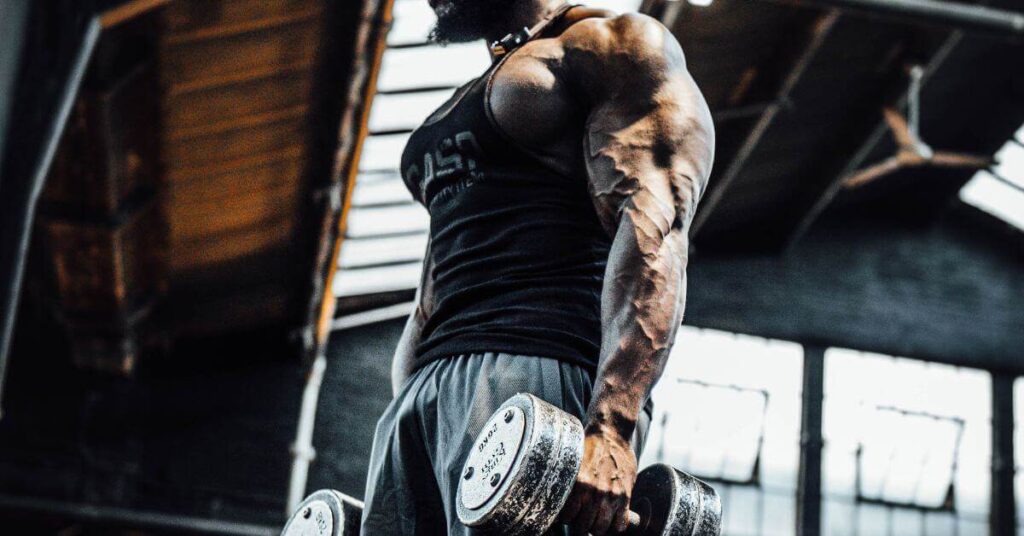
Muscle Strength and Size Ratio
Your triceps are not just the muscles at the back of your upper arms; they’re the beefy powerhouses that give your arms most of their mass. In fact, the triceps make up about two-thirds of your upper arm, which is huge!
They’re responsible for straightening your arm, so every time you push something—a door, a weight, or even doing a proper push-up—you’re counting on your triceps to get the job done.
Your biceps tend to get the most attention, both in the gym and in general life. Big biceps are seen as a token of strength and fitness. They play a significant role in various pulling exercises, such as picking up shopping bags or performing a bicep curl.
The size ratio between your biceps and triceps should be balanced, but a bulky muscle doesn’t always mean it’s stronger. It’s all about the strength ratio, and that’s what gives you the real pull and push power.
Antagonistic Muscle Action
The biceps and triceps are antagonistic muscles, meaning that when one muscle contracts, the other one relaxes. They work in a push-pull relationship.
When you do a bicep curl, your biceps contract while your triceps relax. Conversely, when you straighten your arm, your triceps contract while your biceps relax.
This coordinated action allows for smooth movement and prevents imbalances. Without the antagonistic action of these muscles, you would be stuck in a permanently flexed or straight position.
Think of it like a seesaw. When one side goes up, the other goes down. They work in opposition to control the movement smoothly. So, when one muscle group is pulling, the other is giving way, and vice versa. This teamwork is what lets you move your arms (and the rest of your body) with precision instead of flopping around like a noodle.
Aesthetic Considerations
When aiming for well-defined arms, it is important to achieve visual symmetry between your biceps and triceps.
Think of your arms as a balanced showcase, with your biceps on the front and your triceps on the back. Both muscle groups are equally important in creating a toned appearance.

In bodybuilding, aesthetics mean a lot. The judges and the crowd, they’re all looking for that perfect blend of muscle definition, size, and symmetry. It isn’t simply about having muscles; it’s about how those muscles complement each other to create an aesthetic whole.
Your triceps are a significant part of your arm, accounting for about two-thirds of its mass. While they may not receive as much attention as your biceps, they play an important role in achieving a well-rounded arm. Focusing on training your triceps can help you achieve a more balanced and aesthetically pleasing arm appearance.
There’s often a little too much love given to the biceps, leading to a training focus shift. Everyone wants those popping biceps, right? Yet, it’s the balance that truly creates a visually pleasing and functional arm. Neglecting your triceps may lead to asymmetry, and who wants uneven arms?
And when you flex, it’s not only the bicep bulge people notice, but also the tricep’s horseshoe-like shape waving back. That’s muscle aesthetics in action, with every part playing its role for that stunning result.
Determining Strength and Balanced Development
In your fitness journey, knowing how to gauge muscle growth and maintain symmetry between biceps and triceps is essential. Let’s get into the specifics of how to assess your progress and why a balanced approach can lead to better results.
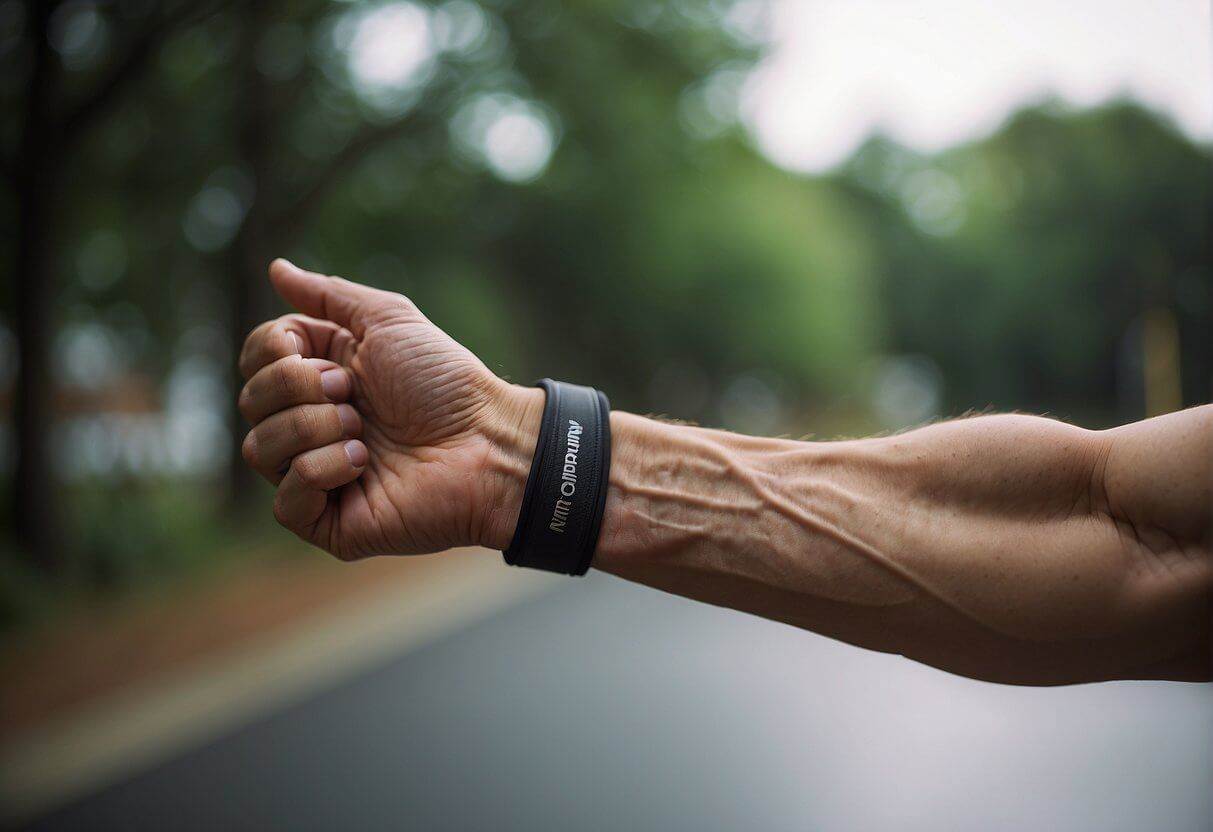
Importance of Symmetry and Balance
Muscular imbalances may unknowingly be putting yourself at a higher risk of injuries.
It’s crucial to aim for a well-rounded development in order to have overall stronger arms, which in turn can enable you to lift heavier weights and achieve that desired toned physique that seems to be on everyone’s wish list.
However, the importance of balanced training goes beyond mere aesthetics; it also plays a crucial role in promoting functional fitness for your everyday life.
Whether you’re a dedicated bodybuilder or simply someone who enjoys general fitness activities, maintaining equilibrium in your training routine is essential for unlocking your maximum growth potential and achieving optimal results.
Exercises for Biceps and Triceps
When aiming to enhance arm strength, focusing on the biceps and triceps is crucial. The exercises listed below target these muscles either in isolation or within compound movements, contributing to both aesthetics and functional strength.
Bicep-Centric Exercises
Curls of all kinds are your go-to for bicep development. Begin with the bicep curl, a staple move where you can use a barbell or dumbbells to lift the weight towards your shoulders. Mix in some hammer curls and alternating dumbbell curls to target different muscle fibres.
- Barbell Curl: Stand straight, grip the weight with both hands, and curl it up whilst keeping your elbows pinned to your sides.
- Dumbbell Hammer Curl: With palms facing your body, lift the weights in a hammer motion, targeting the brachialis along with your biceps.
For a twist on the regular curl, incline dumbbell curls make your biceps work harder as the incline bench position stretches the muscles more at the start of the movement. The dumbbell spider curl and resistance band curls provide variety and constant tension throughout the curl for those who want to push their muscles from different angles.
Tricep-Focused Training
For a mighty set of triceps, extensions are where it’s at. Triceps extension exercises come in many forms, including the cable pushdown for a great isolation exercise. Then add dumbbell kickbacks and seated EZ bar triceps extension to round out your workout.
- Cable Pushdown: Stand in front of the cable machine, push the bar down until your arms are fully extended, and then slowly let it back up.
- Dumbbell Skull Crusher: Lying on a bench, extend the weights above you, then bend your elbows to lower the dumbbells towards your temples before extending back up.
Skull crushers, using either a barbell or dumbbells, highlight the importance of movement control, whereas dumbbell kickbacks work the triceps through a different, more bent-over angle.
Compound Movements Affecting Both
Don’t forget about moves that hit both your biceps and triceps. Compound movements like the bench press and push-ups engage your whole upper body. These pushing movements naturally recruit your triceps, while pulling movements like rows or chin-ups bring your biceps into action.
- Bench Press: As you press the weight upwards, your triceps are essential for the locking out movement.
- Push-Ups: Modify the width of your hands to target different areas; a closer hand position focuses more on the triceps.
Incorporate these exercises into your routine to ensure a balanced approach to arm training, leading to not only stronger but also visually appealing arms.
Effects of Training on Daily Life and Sports
Developing stronger arms through balanced training is not just about boosting your physical appearance. It’s about enhancing your functional fitness and athletic performance. This can transform how you carry out everyday tasks and also your success in various sports.
Functional Advantages of Stronger Arms
By toning both your biceps and triceps, you secure a well-rounded strength that supports your upper extremities in everyday activities. Think about lifting groceries, remaining stable while moving furniture, or even performing tasks that require fine motor skills, like writing or cooking.
These actions significantly draw on the push-pull dynamics of the arms, where strong biceps are critical for pulling actions, and robust triceps are necessary for pushing movements.
For instance, pulling open a heavy door primarily utilises your biceps, while pushing it closed shifts the focus to your triceps. With balanced training, both these actions feel easier and more fluid, serving both your strength application and functional fitness.
Influence on Athletic Performance
In the sporting world, the benefits of stronger arms are even more pronounced. When you have well-conditioned biceps and triceps, you can expect a boost in athletic performance through improved control and power.
Imagine swinging a bat or throwing a ball; these movements benefit greatly from a symbiotic relationship between your biceps and triceps. Biceps assist in the quick, controlled pulling motions needed in sports like tennis, while triceps contribute to powerful pushing actions, key for sports involving presses, like shot put or basketball.
To optimise performance, effective exercises that target these muscle groups should be incorporated into your routine. Squats and deadlifts are great, but let’s not forget about arm-specific exercises like bicep curls and tricep dips. These not only enhance your strength but also contribute significantly to your functional fitness, giving you the edge you need whether you’re on the field or carrying your shopping home.
Should Your Biceps Or Triceps Be Stronger?
When you go to the gym and focus on developing your upper body, remember you should be balancing your workouts to develop antagonistic muscles like biceps and tricep equally.
Imagine your arms as a seesaw – if one side becomes too heavy, you risk losing balance and toppling over!
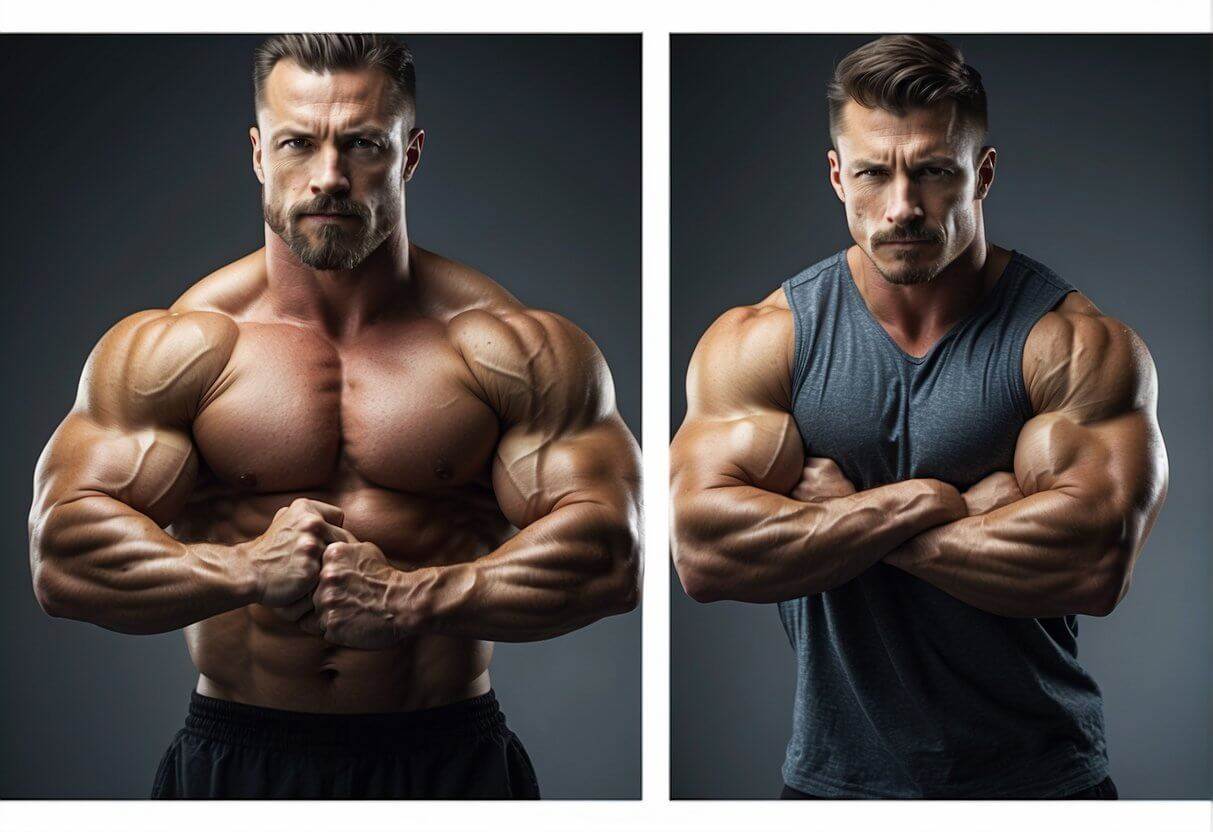
When looking at balanced development, remember that your arms are not just for show; they’re for all sorts of tasks like lifting groceries or pushing a door open.
Now, your triceps, despite being out of sight, are actually about two-thirds of your arm’s muscle mass. That’s right, they’re the bulk of the brawn, doing a lot of the heavy lifting, quite literally.
Moving to the fitness approach, it’s smart to think functionally. Mix up your strength training with exercises that fire up both muscle groups. A well-rounded routine ensures upper body function is optimized.
Talking about tips for preventative measures, keep a watchful eye on any muscle imbalance because it can lead to a world of hurt. By hurt, I mean injuries that could bench you for a while.
So let’s get both biceps and triceps in tip-top shape for all the reaching, pushing, and pulling life throws at you.
Remember, it’s not about having bigger biceps or stronger triceps; it’s about getting them to join forces for that arm-wrestling-worthy strength. Keeping them both in the game is your ticket to a stronger, more resilient upper body.


